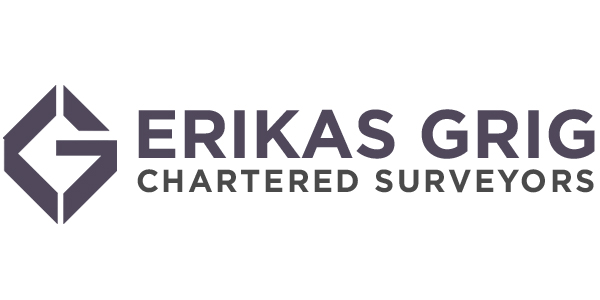It has become increasingly difficult for many people to purchase a home. When you compare the average income growth and property price growth in the UK over the last year, it’s not hard to see this. Those numbers can make the situation seem rather dire.
However, the solution to this problem could be a shared ownership scheme. In this article, we will look at what a shared ownership scheme is and the pros and cons of entering into one. This will help you decide if it’s a suitable option for you.
A shared ownership scheme is a programme run by social registered landlords or housing associations to help buyers with limited resources enter the property market. How they work is by allowing people to purchase a share of the property they will live in and only pay rent on the remainder of shares they do not own.
The remainder of the shares is usually available for purchase at any point during the tenure of the lease (which can be up to 250 years). This means that if you enter into a shared ownership scheme, it is possible to eventually own the property. However, some organisations limit the maximum share to an amount under 100%, e.g. 75%.
You can purchase the remainder of the property through something called “staircasing”. Owner-occupiers can purchase the rest of the property in parts, getting one step (hence, staircase) closer to owning the whole property.
While the scheme is a great way for people to be able to purchase property more easily, there are limitations on who qualifies. Certain organisations only provide this housing option to people who fit certain demographics.
For example, there are organisations that provide shared ownership options for people with disabilities or older people. However, people who fit these criteria also have to fit broader criteria that are applicable to all organisations.
Largely, the criteria is a matter of affordability. Households with an annual income of less than £80 000 (if you live outside of London) could qualify. If you live in London, this number is £90 000.
You will also still be required to have financial checks run as you would when applying for any other loan or mortgage. However, with a shared ownership scheme, your mortgage will be smaller and so your affordability will likely be better. Other expenses, like the rent you will need to pay, will also be factored in.
In concept, a shared ownership scheme seems like a great solution for people who might otherwise not be able to afford to buy a property. While this may be true, there are advantages and disadvantages to these schemes in practice. Let us take a look at the main ones here.
The main advantage of a shared ownership scheme is that it can make purchasing a home more affordable. Because of the smaller mortgage you need, your deposit is also much smaller. The rent that you pay is competitive and is no more than 3% of the remaining share value (that you don’t own) per annum. Private rentals are often more expensive than shared ownership agreements.
Shared ownership opens you up to the opportunity to save and pay off a mortgage quicker than if you were to buy a house using the traditional route. A smaller mortgage means smaller instalments. If you manage your money well and can save a little along the way, you’ll be well on your way to purchasing more shares. With shared ownership, you can purchase the property in smaller, more manageable parts.
Additionally, you are still able to sell a shared ownership property at any time. If you do this, you would benefit from property value increases in the same way as in a traditional sale.
The main disadvantages to a shared ownership scheme are the limitations they hold and the extra costs involved.
Firstly, you are limited to the areas in which shared ownership properties are available. So, you have less choice in where you can live. Secondly, the opportunity to purchase more shares in your property is always available, but inflation can make buying more shares unattainable.
Next, service charges are an extra cost that is easily and often forgotten. At the end of the day, you are still renting the property. So, service charges and ground rent are extra costs to factor in.
Lastly, shared ownership mortgages have lengthy and gruelling application processes that leave many disappointed.
If you have purchased a home before, you will need to pay stamp duty. This duty can be calculated using either the full sale value of the property or the value of the portion you want to purchase. This is a choice you can make.
If you choose to pay it on the portion you want to purchase, it will be a smaller amount to pay upfront. However, should you purchase more shares later, the tax will be calculated on the current value of that share, which will likely have gone up over time. This is just something to bear in mind.
If you are a first-time homeowner, you may be eligible for a discount or exemption. Previously, this did not apply if you chose to pay the stamp duty only on your share and not on the full value of the property.
However, since 2018, as long as the full value of the house does not exceed £500 000, you may be exempt from paying the stamp duty.
Now you may wonder, “What happens if I’d like to sell my share of the property?”
Luckily, this is a relatively simple process. You can sell the property similar to how you would normally sell a property you owned. The main difference being you will only receive proceeds of the full sale price relative to your owned share.
There is also something known as the “nomination period”. The organisation that offers the shared ownership scheme has the right to find a buyer before you put the property on the market.
There will also likely be a few extra fees involved. You may have to pay for the marketing or advertising of the property as well as the legal fees incurred by the housing association for a leasehold information pack. In addition, you will need to pay to obtain a shared ownership valuation report from a chartered surveyor.
You might also have to pay an “assignment fee” to the housing association when they find a new buyer. This is comparable to an estate agent’s fee, which is commonplace. However, it is important to note that this fee is calculated on the full value of the house and not only on the portion that you own.
Final Thoughts
There are many things to consider when purchasing a property. A shared ownership scheme can make it much easier for you to do so if you are concerned about affordability. But, it’s important to be aware of the extra costs that may be involved.
It’s also important that you check the criteria and lease agreement with the housing association that you plan on using. That way, you can make an informed decision on whether it is best for you.




